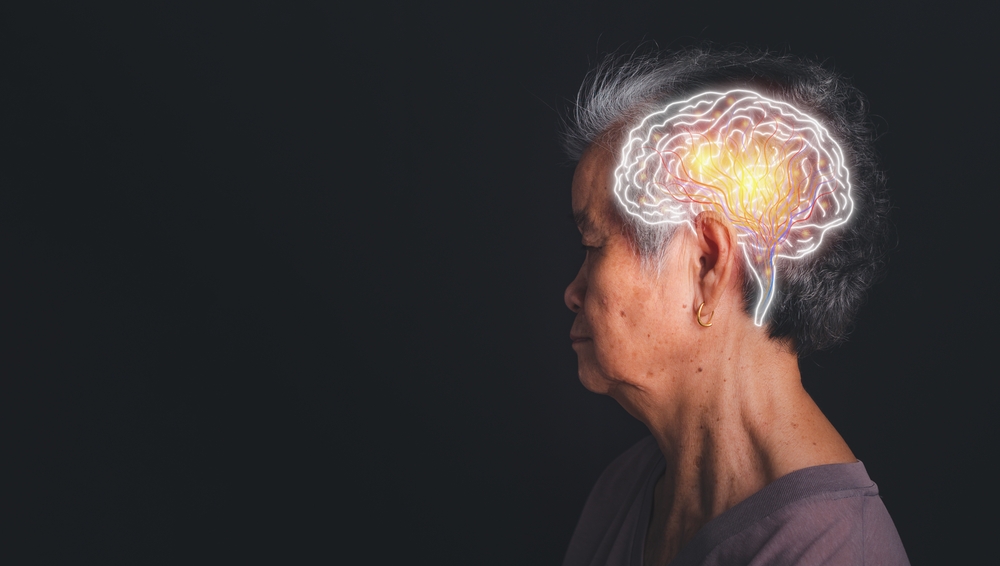Al uncovers a possible trigger for Alzheimer’s and points to a promising new treatment

What if the greatest mysteries of the mind weren’t locked in some distant future, but waiting—right now—to be uncovered? Alzheimer’s has long been seen as an unstoppable force. A slow unraveling of memory, of identity, of everything that makes a person them. It doesn’t just affect individuals—it fractures families, reshapes generations, and quietly steals time. For years, we’ve watched its rise with more questions than answers. But now, thanks to a groundbreaking fusion of artificial intelligence and molecular biology, a new answer is beginning to emerge. Not just a clue, but a potential cause. And even more than that—a path forward.
In a discovery that could rewrite how we understand, diagnose, and treat this devastating disease, scientists have identified a hidden role played by a gene long thought to be harmless. With the help of AI, they’ve uncovered how it might trigger Alzheimer’s from within. And for the first time in a long time, we’re not just talking about managing decline. We’re talking about disrupting it.

A Hidden Culprit in Alzheimer’s – Unmasked by AI
For decades, Alzheimer’s disease has remained a mysterious thief—slowly erasing memories, identities, and lives. But a recent breakthrough by researchers at the University of California San Diego may have brought us a step closer to understanding, and potentially disrupting, its silent progression. At the heart of this revelation is a gene known as PHGDH, once merely flagged as a potential biomarker for Alzheimer’s, now revealed as a possible trigger for the disease itself.
Using the precision and processing power of artificial intelligence, Professor Sheng Zhong and his team uncovered a crucial detail: PHGDH isn’t just an innocent bystander. It plays a double role—one of them hidden, one of them harmful. Beyond its known function in producing an amino acid called serine, PHGDH has a “moonlighting” function that disrupts gene regulation in brain cells. This disruption sets off a cascade that may lead to the early stages of Alzheimer’s.
Thanks to AI-powered 3D modeling, the researchers identified a previously unseen substructure within the PHGDH protein. This structural pocket allows it to interact with two critical genes, throwing the brain’s delicate genetic balance off course. The more active this rogue function becomes, the more severe the Alzheimer’s pathology appears—creating a clear link between PHGDH’s abnormal activity and the disease’s progression.

This discovery didn’t emerge overnight. It required cross-verification with patient samples from multiple medical centers to ensure the data held up across populations. But now, the link is solid: PHGDH isn’t just a signal of Alzheimer’s—it could be part of what causes it.
What makes this breakthrough even more powerful is that it opens the door to action. Scientists now know where the problem begins and how it unfolds. And that means we might finally be able to stop it—not just after the damage is done, but before it even starts.
The Rise of AI in Neuroscience – Seeing the Invisible
Artificial intelligence is not just a buzzword in today’s headlines—it’s becoming a transformative force in medical research, particularly in areas like neuroscience where complexity and mystery have long held the upper hand. The recent discovery around PHGDH and its role in Alzheimer’s wouldn’t have been possible without the use of AI-powered tools. Traditional lab methods often miss what AI can detect: hidden structures, patterns across vast datasets, and multi-dimensional relationships that can take human researchers years to untangle. In this study, AI was used not only to analyze massive amounts of gene expression data but to build highly detailed three-dimensional models of proteins—revealing a functional substructure in PHGDH that had never been observed before.
This kind of precision is especially crucial in brain research, where even small disruptions can have wide-ranging effects. Alzheimer’s, for example, involves a complex interplay of genetics, cellular signaling, protein misfolding, and environmental triggers. AI brings the capacity to sort through this chaos and highlight what truly matters. In the case of PHGDH, AI didn’t just confirm the gene’s presence in patients—it uncovered a deeper, causative role, and showed how it hijacks the brain’s gene-regulation system. What’s more, AI helped researchers simulate how potential drug molecules, like NCT-503, interact with the problematic substructure, saving years of trial-and-error in the lab. This convergence of machine learning with molecular biology is creating new possibilities that were unthinkable just a decade ago.
More broadly, this is a glimpse into the future of medicine. AI is already being used to detect early signs of diseases like Parkinson’s and ALS, analyze MRI scans with more accuracy than human radiologists, and identify personalized treatment paths based on genetic profiles. But what makes the Alzheimer’s study stand out is how AI wasn’t just a support tool—it was an engine of discovery. It’s a reminder that technology, when used responsibly, can bring a human-centered impact. We are no longer just reacting to disease. With AI, we are beginning to predict, to understand, and for the first time in Alzheimer’s research—to strategically intervene before irreversible damage is done.

Why This Breakthrough Matters – Memory, Meaning, and the Human Cost
Alzheimer’s isn’t just a disease of the brain—it’s a disease of identity. It erodes names, faces, and the stories we carry. For families, watching a loved one lose pieces of themselves is one of the most painful experiences imaginable. That’s why this breakthrough is not merely a scientific milestone—it’s a deeply human one. For years, the conversation around Alzheimer’s has largely centered on coping: how to manage symptoms, how to care for those affected, how to prepare for the inevitable decline. But the discovery of PHGDH’s causal role—and a molecule that might intervene—shifts that conversation toward prevention and possibility.
This matters not only to those already living with the disease, but to entire generations facing the reality of an aging population. According to the Alzheimer’s Association, over 6 million Americans are currently living with Alzheimer’s, and that number is projected to more than double by 2050. The emotional burden is matched by a financial one—costs related to care and lost productivity are staggering. But what’s often less discussed is the psychological toll on families: the quiet grief of losing someone before they’re physically gone, the years spent navigating uncertainty, and the helplessness that comes with a disease we’ve had no real tools to stop. A targeted treatment—even one that simply delays onset—could give families more time, more clarity, and most importantly, more connection.

Breakthroughs like this also reframe how we think about aging. Cognitive decline has long been treated as an inevitable part of growing older, a slow fade into confusion. But if Alzheimer’s can be traced to specific, preventable biological mechanisms—like the rogue activity of a single protein—that means decline is not destiny. It opens the door to early screenings, lifestyle adjustments, and proactive treatments that preserve not just memory, but dignity. It also challenges us to invest more deeply in science that focuses not just on extending life, but on protecting the quality of it. At its core, this discovery is about protecting the very things that make us human—our memories, our relationships, and our sense of self.
A New Story for the Mind – From Resignation to Responsibility
We live in an age where technology often moves faster than our understanding of it—but when it’s used with intention, with wisdom, it becomes more than innovation. It becomes hope. This discovery around PHGDH isn’t just a scientific win—it’s a call to rewrite the story we’ve been telling ourselves about Alzheimer’s. For too long, we’ve accepted cognitive decline as a shadow that comes with age, something to endure, not challenge. But what if that story was incomplete? What if the mind, even in its most fragile moments, holds possibilities we’ve yet to fully respect or explore?

The deeper truth is this: knowledge brings responsibility. Now that we know more—about PHGDH, about AI’s power in unraveling hidden patterns, about compounds like NCT-503—we can no longer look away. We can no longer speak of Alzheimer’s as a distant fate for “somebody else.” Whether it touches a parent, a partner, a friend, or ourselves, this disease reveals something fundamental about how we value memory, presence, and connection. So we must demand more—more funding for research, more ethical use of AI in medicine, more support for early detection, and more urgency in translating breakthroughs from the lab to the people who need them most.
But beyond science and systems, this is personal. Every moment we remember who we are, every time we share a story, or recognize a familiar face—we’re witnessing something sacred. Protecting that isn’t just the job of doctors or researchers. It’s a collective mission. It’s a reminder to not wait until the mind begins to fade to value what it means to be fully present. Because if we can begin to prevent Alzheimer’s, if we can even slow it, then maybe we’re not just preserving memory. Maybe we’re reclaiming our future—one breakthrough, one intention, one mind at a time.
Loading...

